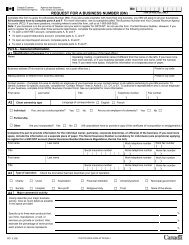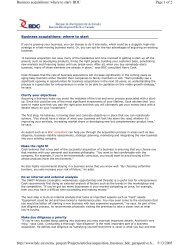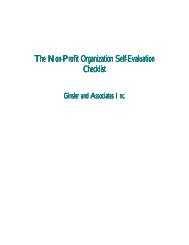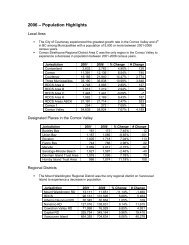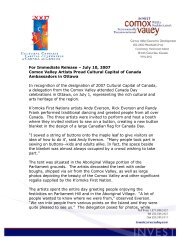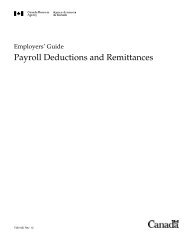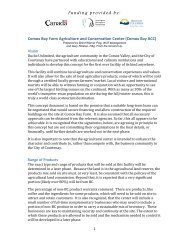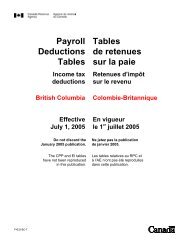qprev_HBB Manual 2.qxd - Small Business BC
qprev_HBB Manual 2.qxd - Small Business BC
qprev_HBB Manual 2.qxd - Small Business BC
You also want an ePaper? Increase the reach of your titles
YUMPU automatically turns print PDFs into web optimized ePapers that Google loves.
• Include packaging and delivery costs andthe cost of bad debts/returns (three to five percent of the value of sales). Divide this total bythe number of units to be sold for the year.The two sets of figures you will have at the endof these calculations are:1. Total supply and material costs forone year.2. Supply and material costs forproducing one UNIT of eachproduct/service.If you order enough supplies and materialsin bulk for a year, you may be able to savemoney. How could you handle storage? Wouldthe saving be worth putting out that much moneyat one time, at this stage?Operating Expenses – Non-labourOperating expenses excluding the cost of labourare called overhead or fixed expenses becausethese things usually must be paid regardless ofsales. These standard business operatingexpenses are:• Rent• Utilities – telephone, power, services• Car or other vehicle• Transportation• Supplies (office)• Maintenance agreements (photocopier, vehicle)• Advertising and promotion• Legal/accounting• Insurance• Interest and bank charges• Depreciation (decline in value of assetsbecause of use)• Managerial salary• OtherAdapt the list of standard costs to your situation,and prepare a table of operating expenses – nonlabour,by estimating these costs for each monthof the year of operation being forecast.Forecasts about costs of production – non-labour– will give these figures:• Total sales of each product and costs(supplies/materials and overhead) for the yearof operation.• Monthly totals throughout that year (totalsales, monthly costs of supplies/materials andoverhead).• Product/service totals for each month and forthe year (total sales of each product or service,supplies/materials and overhead costs).Operating Expenses – LabourSalaries are a main labour cost, but relatedoperating expenses must be calculated too, suchas benefits and taxes. By job title, list all theemployees or staff needed to produce the salesvolume you have forecast for Year One. Enter thetotal salary or wage for each employee for eachmonth. Adding these gives you total operatingexpenses – labour for each month. Addingfigures for each month will yield a total for theyear.The three types of payroll taxes are CanadaPension Plan, Employment Insurance, andWorker’s Compensation Insurance. Informationabout these is available from related Governmentof Canada offices. Benefits can includemedical/dental, insurance, vacation pay ( four percent of salary for part-time workers). Monthly80solutions for small business home-based business



